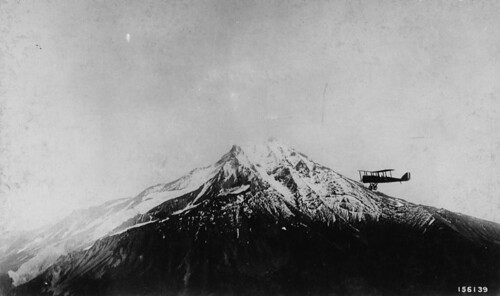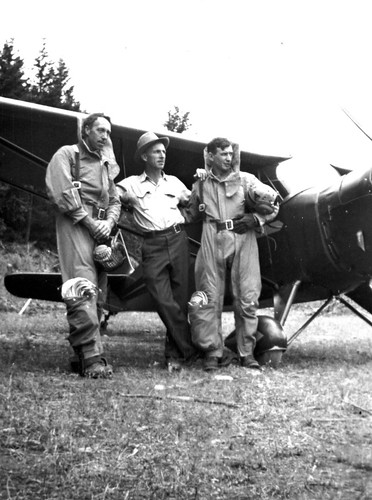
It shouldn’t surprise anyone that the U.S. Forest Service relies heavily on fixed wing and rotary aircraft to accomplish the agency’s mission. Employees take to the skies for forest inventory surveys, prescribed fire support, firefighting or to get to remote locations. Since 1919, aircraft has been an invaluable resource for the agency.
There are differing accounts as to when the Forest Service first put aircraft to use. But, it wasn’t until 1919 when Forest Service leadership talked about the use of aviation resources. In April, Forester Coert du Bois told Chief Forester Henry Graves that aerial fire patrols would begin on the Angeles and Cleveland National Forests. These patrols, supported by military pilots from the Air Service of the U.S. Army, continued through 1927, after which the Air Service could no longer support the agency.
Finally, in 1939, the Forest Service took delivery of its first aircraft, a brand new Stinson Reliant. This aircraft, used for patrols and staff transport, helped the agency explore the concept of using paratroopers for fire suppression. As this idea continued to take shape, firefighter Francis Lufkin and Glenn Smith, a professional jumper, made the first jump into mountainous terrain. This jump demonstrated the viability of using smokejumpers as a firefighting tool. These early successes lead the Forest Service to establish parachute training sites in Winthrop, Washington, and another in Missoula, Montana, in 1940.
On July 12, 1940, Earl Cooley and Rufus Robinson made history with their first ever parachute jump into a wildfire on the Nez Perce National Forest in Idaho. And, what many people don’t realize, the Forest Service’s use of jumpers occurred before the U.S. Army formalized its use of paratroopers.

The Army definitely kept an eye on what the Forest Service was doing and even sent Army officers to the smokejumper base in Missoula to learn parachute techniques and training tips. One of the officers, Maj. William Cary Lee, later organized the first paratrooper training at Fort Benning, Georgia. It wasn’t until August 16 that same year that members of this test platoon made their first jump from a Douglas B-18 over Lawson Army Airfield.
Today, the Forest Service has a wide array of aviation resources available for use, mostly through contracts and agreements, and has over 250 smokejumpers at seven bases throughout the West.
